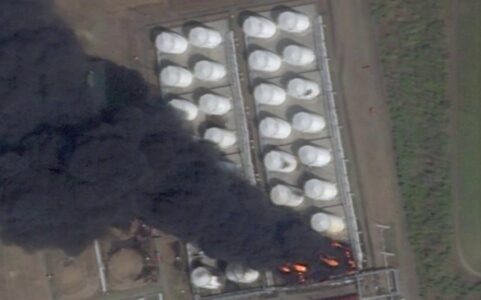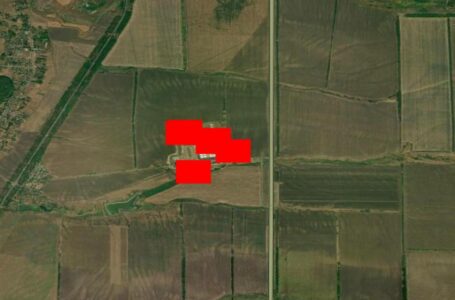On the night of June 23rd, Russian air defense was busy repelling Ukrainian drone strikes. The scale of the attack was not large but at damage was reported to a strategic rear facility. According to the Ministry of Defense of the Russian Federation, Russian air defenses intercepted 23 drones, 14 of which targeted the southern Rostov region.
According to local reports, one of Ukrainian drones struck an industrial facility in the Kamensky District, sparking a fire that burned for four hours before being extinguished. No casualties were reported.
Military monitoring channels identified the target as “Atlas,” a fuel storage and distribution hub operated by Rosrezerv Russia’s state reserve agency. The facility, located near Kamensk-Shakhtinsky, supplies petroleum products to military units in Ukraine.
This marks at least the third attack on the site, with previous strikes on November 29th and August 3rd, 2024, causing fires that took days to contain. Footage from the scene showed multiple fuel tanks engulfed in flames, with emergency crews, including two fire trains, deployed to the area.
Established in 1963, the Atlas complex underwent modernization in 2019, transitioning from underground to above-ground storage tanks. It has since played an important role in military logistics, participating in joint drills with Russia’s Defense Ministry to streamline fuel distribution for combat operations.
Targeting of Rosrezerv sites suggests Ukraine is trying to degrade Moscow’s energy logistics. As drone warfare intensifies, Russia’s rear-line infrastructure increasingly faces frontline risks.








jewish untermensch are the problem in the middle east. a pity that hitler didn’t get the job done. i googled “csongor kovács” what i saw was 3 different men, all black haired and black eyes (aryan my ass) one with dumbo ears, the other with jew nose and the third looks like a “trisomy 21” type, by the way hungarians (who are descendants of mongols) are mostly gypsies. so a gypsy jew lol gypsy jew black haired rotflol
the jew hitler did his job to a t. millions of christians dead in that war with only 600,000 jews died. there were less than 6mill. jews in all of europe when the war started. almost 5mill. jews arrived on ellis island in only 4 yrs after it ended. this is actual documentation, go find it.
it’s sad but true
awesome! 🇷🇺=🤡 😆😆😆
not as awesome as the ukrainian training grounds that got destroyed today
russia is 2 big to fail. israel on the other hand has no strategic depth.trump will soon be forced to defend israel at all costs & double down attacks on iran. bibi,trump are delusional to think that there will be regime change in iran. someone with common sense should remind them that when big countries are treacherously attacked they become more cohesive. anyone remember pearl harbor? iran fought 8 years against iraq who was fully supported by the west
transfering the storage from underground to above ground sure wasn’t the smartest move in hindsight.
it needs to be (((modernized))) some more and go back underground.
“afu totally collapsed”…heheheh…dumb orc bastads!
when your only troll available is that your side has not yet completely collapsed….
had nazi germany collapsed after stalingrad ? no, but still the war was lost and its end was just a matter of time.
the nato trolls celebrating a sucessful attack on russia while the reverse happens tens of times per day
that is winning for you.
no shame, no self awareness and no brain.
you enjoy much poofing , yes?
hey look, the village idiot escaped the basement again